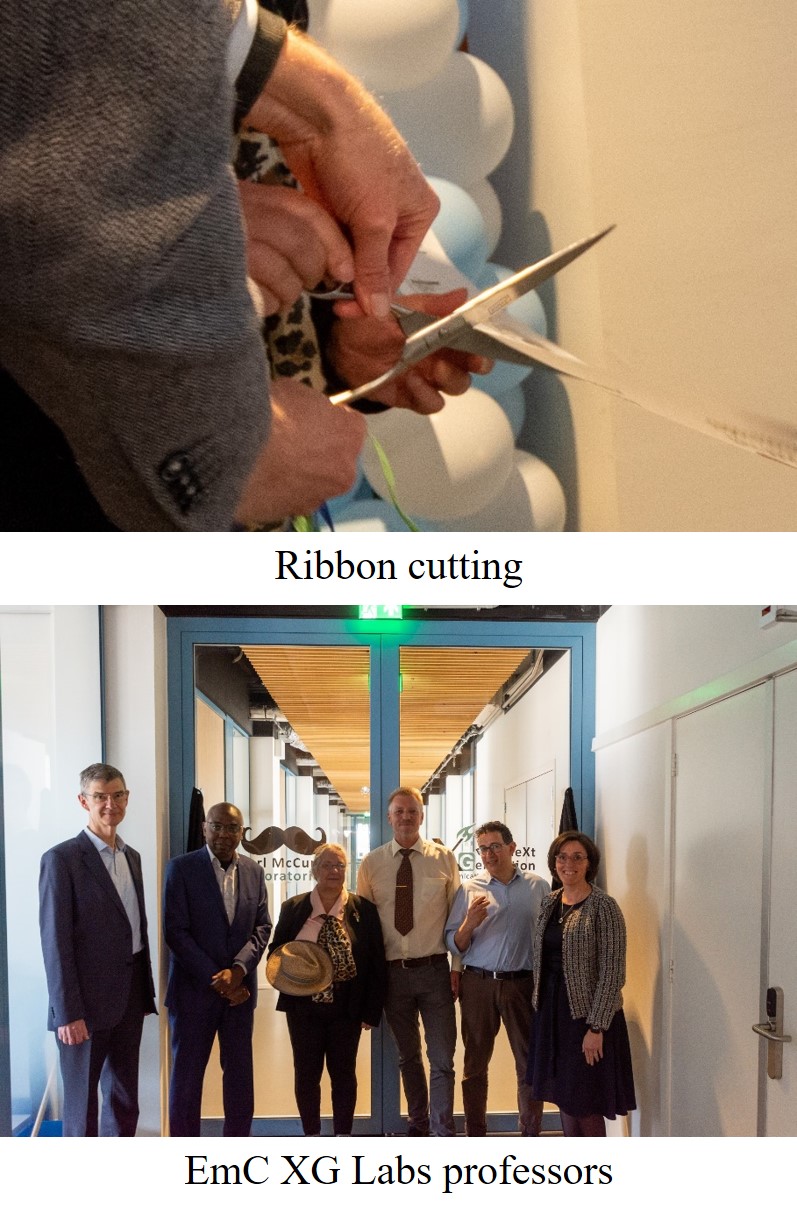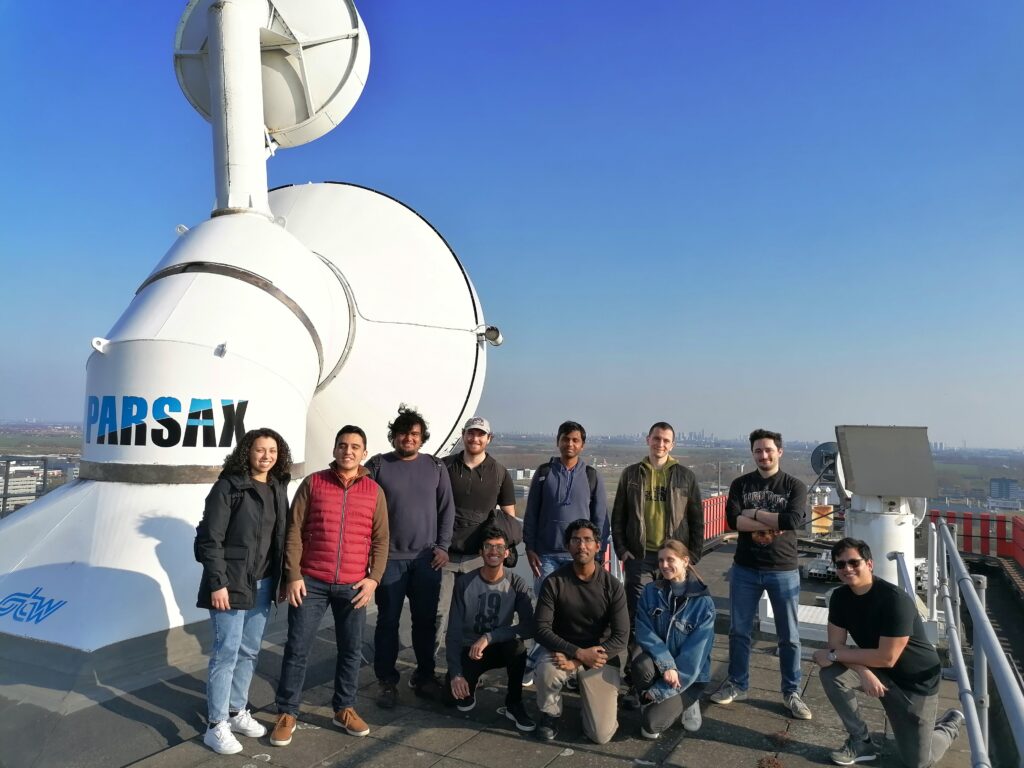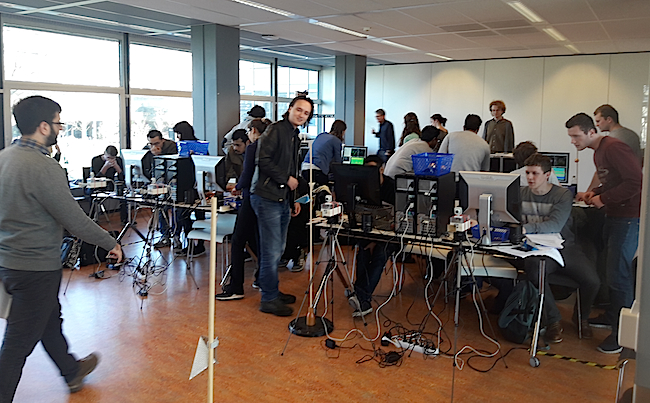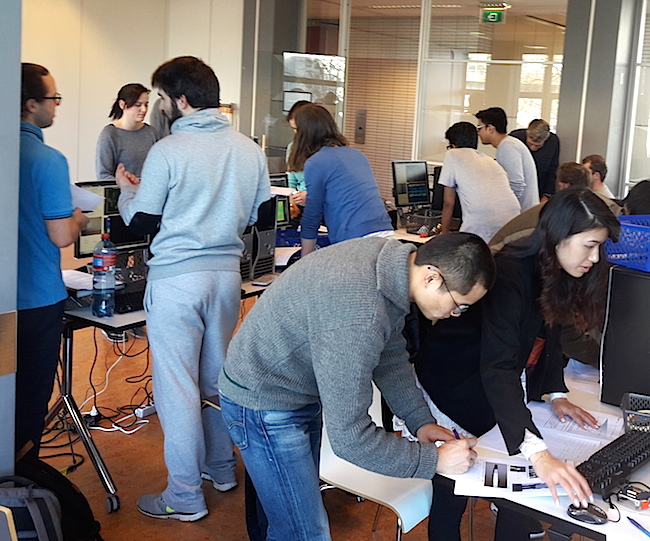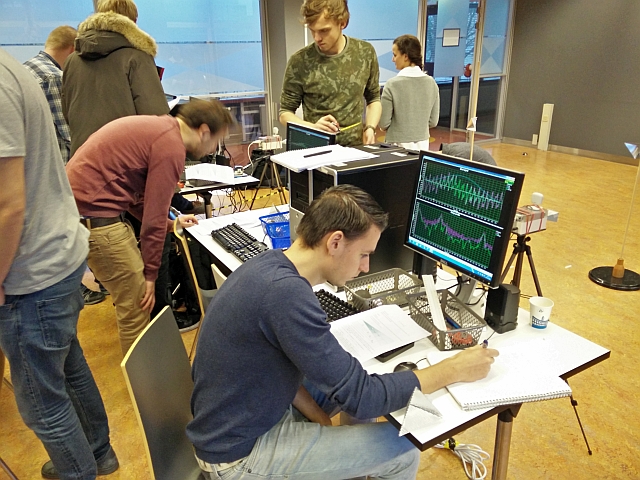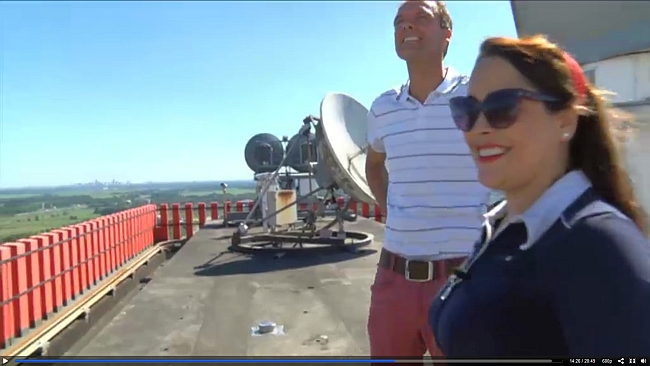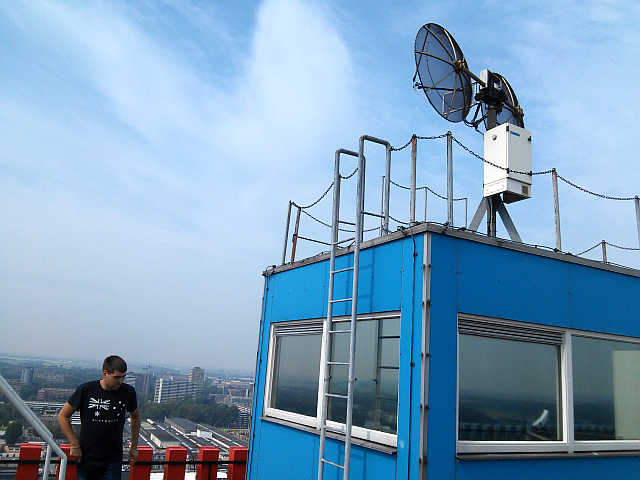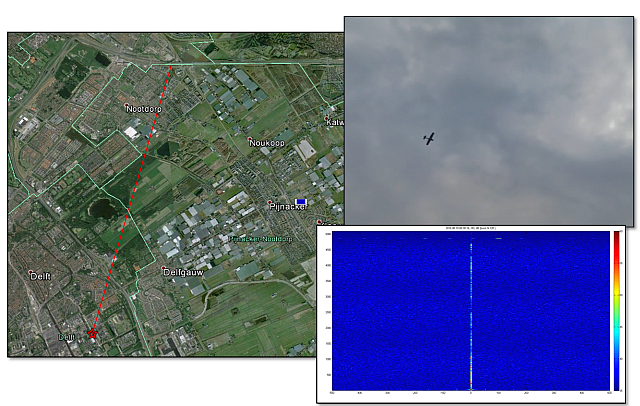Barbara McCune, wife of the late Earl McCune, and Lucas van Vliet, Dean of the EEMCS Faculty, inaugurated the Earl McCune XG Labs on April 17th, 2023. Many people attended the ceremony, both from the Microelectronics department as well as external partners such as TNO, Nokia, Rohde&Schwarz, BSW…
The EmC XG Labs receives its name from Prof. Earl McCune (EmC), who enabled the neXt Generation (XG) communication and sensing efforts at TU Delft thanks to his great enthusiasm, his vast amount of knowledge, and his warm personality.
The EmC XG Labs consists of a cluster of state-of-the-art microwave laboratories, covering the frequency spectrum from 30 kHz to 500 GHz, able to perform measurements on packaged, on-wafer, and over-the-air devices and systems, providing an excellent frame for students, scholars, and faculty members to carry out their research.
